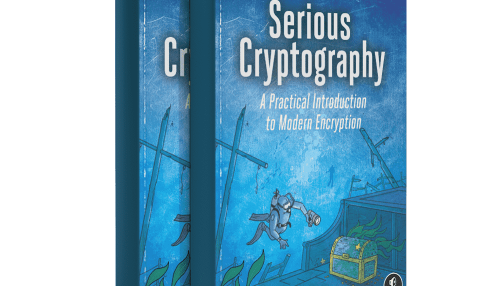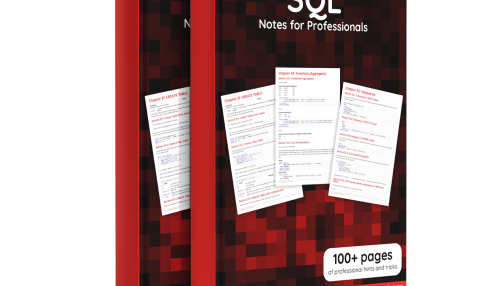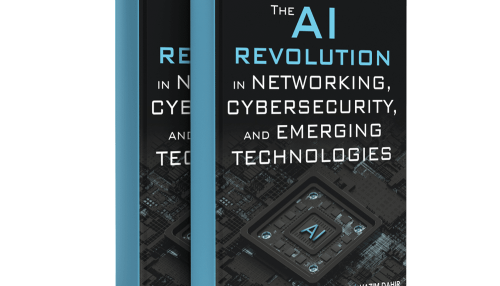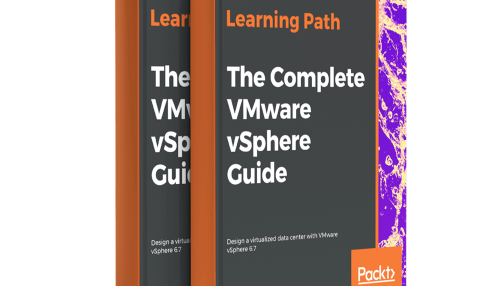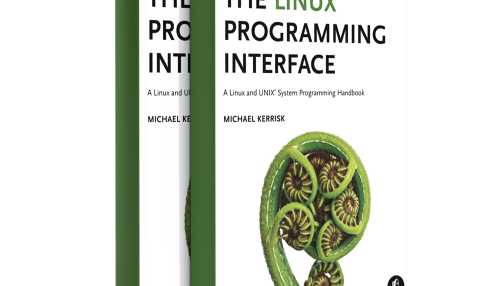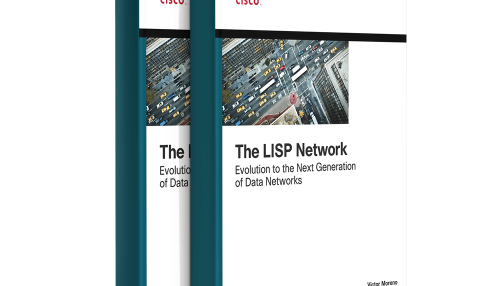SEC504 Workbook – Hacker Tools, Techniques, Exploits, and Incident Handling
فهرست مطالب SEC504 Workbook – Hacker Tools, Techniques, Exploits, and Incident Handling:
Step 4: Keeping Access
Application-Level Trojan Horse Suites
Virtual Network Computing Overview
Common Remote Control Backdoor Capabilities
Wrappers and Packers
Memory Analysis
LAB 5.1:Windows Analysis with Rekall
Rootkit Techniques
Kernel-Mode RootkitTechniques
Rootkit Examples
LAB 5.2: Fun with Rootkits
Covering Tracks In Linux Ln and UNIX
Hiding Files in UNIX
UNIX Log Editing Ed
nting E Editing
LAB 5.3: Shell HistoryAnalysis
Covering Tracks in Windows
Hiding Filles in NTFS
Alternate Data Streams in NTFS
LAB 5.4: Alternate Data Streams
Log Editing
LAB 5.5: Windows Log Editing
Covering Tracks on the Network
Reverse HTTP Shells
ICMP Tunnels
Covert_TCP
LAB 5.6: Covert Channels
Steganography
Hydan
Putting It All Together
Conclusions and References
Serious Cryptography (2nd Edition) – A Practical Introduction to Modern Encryption
فهرست مطالب کتاب Serious Cryptography (2nd Edition):
Part I: Fundamentals
Chapter 1: Encryption
Chapter 2: Randomness
Chapter 3: Cryptographic Security
Part II: Symmetric Crypto
Chapter 4: Block Ciphers
Chapter 5: Stream Ciphers
Chapter 6: Hash Functions
Chapter 7: Keyed Hashing
Chapter 8: Authenticated Encryption
Part III: Asymmetric Crypto
Chapter 9: Hard Problems
Chapter 10: RSA
Chapter 11: Diffie–Hellman
Chapter 12: Elliptic Curves
Part IV: Applications
Chapter 13: TLS
Chapter 14: Quantum and Post-Quantum
Chapter 15: Cryptocurrency Cryptography
SQL Notes For Professionals
فهرست مطالب کتاب SQL Notes For Professionals:
Getting started with SQL
Identifier
Data Types
NULL
Example Databases and Tables
SELECT
GROUP BY
ORDER BY
AND & OR Operators
CASE
LIKE operator
IN clause
Filter results using WHERE and HAVING
SKIP TAKE (Pagination)
EXCEPT
EXPLAIN and DESCRIBE
EXISTS CLAUSE
JOIN
UPDATE
CREATE Database
CREATE TABLE
CREATE FUNCTION
TRY/CATCH
UNION / UNION ALL
ALTER TABLE
INSERT
MERGE
cross apply, outer apply
DELETE
TRUNCATE
DROP Table
DROP or DELETE Database
Cascading Delete
GRANT and REVOKE
XML
Primary Keys
Indexes
Row number
SQL Group By vs Distinct
Finding Duplicates on a Column Subset with Detail
String Functions
Functions (Aggregate)
Functions (Scalar/Single Row)
Functions (Analytic)
Window Functions
Common Table Expressions
Views
Materialized Views
Comments
Foreign Keys
Sequence
Subqueries
Execution blocks
Stored Procedures
Triggers
Transactions
Table Design
Synonyms
Information Schema
Order of Execution
Clean Code in SQL
SQL Injection
The AI Revolution in Networking, Cybersecurity, and Emerging Technologies
فهرست مطالب کتاب The AI Revolution in Networking, Cybersecurity, and Emerging Technologies:
Preface
Introducing the Age of AI: Emergence, Growth, and Impact on Technology
Connected Intelligence: AI in Computer Networking
Securing the Digital Frontier: AI’s Role in Cybersecurity
AI and Collaboration: Building Bridges, Not Walls
AI in the Internet of Things (AIoT)
Revolutionizing Cloud Computing with AI
Impact of AI in Other Emerging Technologies
Index
The Complete Guide to YouTube for Business
فهرست مطالب:
Introduction Marketing + You(Tube): Your Business on the Platform
Chapter ONE Identifying + Refining Goals for Your YouTube Presence
Chapter TWO Like + Subscribe to a YouTube Marketing Strategy
Chapter THREE Shorts, Sweet, + to the Point: YouTube Video Formats
Chapter FOUR Everything You Need to Know About the Algorithm
Chapter FIVE Tips + Tricks for Developing Engaging YouTube Videos
Chapter SIX Measurement + Monetization Strategies
Conclusion Subscribe Worthy Software for Your Social Strategy
The Complete VMware vSphere Guide
فهرست مطالب:
Preface
The Virtual Data Center
The Discovery Process
The Design Factors
vSphere Management Design
vSphere Storage Design
vSphere Network Design
vSphere Compute Design
vSphere Physical Design
Virtual Machine Design
Deployment Workflow and Component Installation
Configuring and Managing vSphere 6.7
Life Cycle Management, Patching, and Upgrading
VM Deployment and Management
VM Resource Management
Availability and Disaster Recovery
Securing and Protecting Your Environment
Analyzing and Optimizing Your Environment
Troubleshooting Your Environment
Building Your Own VMware vSphere Lab
Index
The Do’s and Don’ts of Reddit Marketing – Masters in Marketing Series
فهرست مطالب:
Why Reddit Matters in 2025
The Do’s of Reddit Marketing
The Don’ts of Reddit Marketing
Ad Strategies on Reddit
Engagement Tactics for Brands
Crisis Management on Reddit
Actionable Checklist
HubSpot’s Reddit Playbook: Frontline Insights
The Linux Programming Interface A Linux and UNIX System Programming Handbook
فهرست مطالب کتاب The Linux Programming Interface:
Preface
Chapter 1: History and Standards
Chapter 2: Fundamental Concepts .
Chapter 3: System Programming Concepts.
Chapter 4: File I/O: The Universal I/O Model
Chapter 5: File I/O: Further Details
Chapter 6: Processes
Chapter 7: Memory Allocation.
Chapter 8: Users and Groups
Chapter 9: Process Credentials
Chapter 10: Time.
Chapter 11: System Limits and Options
Chapter 12: System and Process Information
Chapter 13: File I/O Buffering.
Chapter 14: File Systems
Chapter 15: File Attributes
Chapter 16: Extended Attributes
Chapter 17: Access Control Lists
Chapter 18: Directories and Links
Chapter 19: Monitoring File Events
viii Brief Contents
Chapter 20: Signals: Fundamental Concepts
Chapter 21: Signals: Signal Handlers
Chapter 22: Signals: Advanced Features
Chapter 23: Timers and Sleeping
Chapter 24: Process Creation
Chapter 25: Process Termination
Chapter 26: Monitoring Child Processes
Chapter 27: Program Execution.
Chapter 28: Process Creation and Program Execution in More Detail.
Chapter 29: Threads: Introduction
Chapter 30: Threads: Thread Synchronization
Chapter 31: Threads: Thread Safety and Per-Thread Storage
Chapter 32: Threads: Thread Cancellation.
Chapter 33: Threads: Further Details
Chapter 34: Process Groups, Sessions, and Job Control
Chapter 35: Process Priorities and Scheduling
Chapter 36: Process Resources
Chapter 37: Daemons
Chapter 38: Writing Secure Privileged Programs
Chapter 39: Capabilities
Chapter 40: Login Accounting
Chapter 41: Fundamentals of Shared Libraries
Chapter 42: Advanced Features of Shared Libraries
Chapter 43: Interprocess Communication Overview
Chapter 44: Pipes and FIFOs
Chapter 45: Introduction to System V IPC
Chapter 46: System V Message Queues
Brief Contents ix
Chapter 47: System V Semaphores
Chapter 48: System V Shared Memory
Chapter 49: Memory Mappings
Chapter 50: Virtual Memory Operations
Chapter 51: Introduction to POSIX IPC.
Chapter 52: POSIX Message Queues
Chapter 53: POSIX Semaphores
Chapter 54: POSIX Shared Memory
Chapter 55: File Locking.
Chapter 56: Sockets: Introduction
Chapter 57: Sockets: UNIX Domain
Chapter 58: Sockets: Fundamentals of TCP/IP Networks
Chapter 59: Sockets: Internet Domains
Chapter 60: Sockets: Server Design
Chapter 61: Sockets: Advanced Topics
Chapter 62: Terminals
Chapter 63: Alternative I/O Models
Chapter 64: Pseudoterminals
Appendix A: Tracing System Calls
Appendix B: Parsing Command-Line Options
Appendix C: Casting the NULL Pointer
Appendix D: Kernel Configuration
Appendix E: Further Sources of Information
Appendix F: Solutions to Selected Exercises
Bibliography
Index
The LISP Network Evolution to the Next-Generation of Data Networks
فهرست مطالب کتاب The LISP Network:
Chapter 1: LISP and the Future of Networking
Chapter 2: LISP Architecture
Chapter 3: Data Center Trends
Chapter 4: The WideArea Network: Bringing Traffic from Access to the Data Center
Chapter 5: MegaScale Access Networks: LISP, User Access, and the Internet of Things
Chapter 6: Security
Chapter 7: LISP and the NextGeneration Mobile Network
The Official CompTIA PenTest+ Student Guide (Exam PT0-002)
فهرست مطالب کتاب The Official CompTIA PenTest+ Student Guide:
Lesson 1: Scoping Organizational/Customer Requirements
Lesson 2: Defining the Rules of Engagement
Lesson 3: Footprinting and Gathering Intelligence
Lesson 4: Evaluating Human and Physical Vulnerabilities
Lesson 5: Preparing the Vulnerability Scan
Lesson 6: Scanning Logical Vulnerabilities
Lesson 7: Analyzing Scanning Results
Lesson 8: Avoiding Detection and Covering Tracks
Lesson 9: Exploiting the LAN and Cloud
Lesson 10: Testing Wireless Networks
Lesson 11: Targeting Mobile Devices
Lesson 12: Attacking Specialized Systems
Lesson 13: Web Application-Based Attacks
Lesson 14: Performing System Hacking
Lesson 15: Scripting and Software Development
Lesson 16: Leveraging the Attack: Pivot and Penetrate
Lesson 17: Communicating During the PenTesting Process
Lesson 18: Summarizing Report Components
Lesson 19: Recommending Remediation
Lesson 20: Performing Post-Report Delivery Activities
The Ultimate Kali Linux Book (Third Edition)
فهرست مطالب کتاب The Ultimate Kali Linux Book (Third Edition):
Chapter 1: Introduction to Ethical Hacking
Chapter 2: Building a Penetration Testing Lab
Chapter 3: Setting up for Advanced Penetration Testing Techniques
Chapter 4: Passive Reconnaissace
Chapter 5: Exploring Open Source Intelligence
Chapter 6: Active Reconnaissance
Chapter 7: Performing Vulnerability Assessments
Chapter 8: Understanding Network Penetration Testing
Chapter 9: Post Exploitation techniques
Chapter 10: Working with Active Directory attacks
Chapter 11: Advanced Active Directory attacks
Chapter 12: Delving into Command and Control tactics
Chapter 13: Advanced wireless penetration testing
Chapter 14: Exploring Social Engineering attacks
Chapter 15: Understanding Website Application security
Chapter 16: Advanced Website Penetration Testing Techniques
17. Chapter 17: Best Practices for the real world
The Ultimate Kali Linux Book, Second Edition
فهرست مطالب کتاب The Ultimate Kali Linux Book, Second Edition:
ندارد


